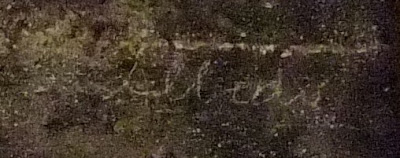Pilgrimage to Passages, J Bowring
A bitterly cold January day. Merciless wind. Snow. Piercing rain. And there it was. The most far-flung point of my journey: Passages, the memorial to Walter Benjamin designed by Dani Karavan. More intense than I had anticipated, more 'real' ...
Giorgio Agamben wrote of the 'memorable' and the 'unforgettable' in response to Peter Eisenman's Memorial to the Murdered Jews of Europe in Berlin. The memorable is that which is able to be archived, stored, sorted - placed within the orthodox devices of memory. The unforgettable, however, exceeds these containers, and was applied to Eisenman's memorial in the context of its abstraction, its claims to non-representation, seeking to elude reading.
Passages is 'unforgettable'. Despite the evident narrative components, the sense of a sequence, of movement, the memorial is open, engulfing, and does not succumb to any tidy message of remembering. Instead, all of the ambiguity, turmoil, tragedy and regret are there in sensation, in the ineffability of the place ... the dark passage, seeing into the distant sea beyond, an eerie echo of some completely different environment, as Benjamin wrote of the Arcades:
The innermost glowing cells of the city of light, the old dioramas, nested in the arcades, one of which today still bears the name Passage des Panoramas. It was, in the first moment, as though you had entered an aquarium. Along the wall of the great darkened hall, broken at intervals by narrow joints, it stretched like a ribbon of illuminated water behind glass. The play of colors among deep-sea fauna cannot be more fiery.

 A small hillock with decimated vegetation, a post-apocalyptic sacred grove. Kiefer has spoken of the Hortus Conclusus as the site of Jesus's crucifixion, a gardenesque Golgotha. The Hortus Conclusus alone was arresting, but there was more ... turning 180 degrees to be hold the opposite niche with its own small garden. This one, a sunflower emerging from a leaden pile of books, was labelled Danae - who was impregnated by Zeus, an immaculate conception in the form of golden rain, the seeds of which lie at the base of the sculpture.
A small hillock with decimated vegetation, a post-apocalyptic sacred grove. Kiefer has spoken of the Hortus Conclusus as the site of Jesus's crucifixion, a gardenesque Golgotha. The Hortus Conclusus alone was arresting, but there was more ... turning 180 degrees to be hold the opposite niche with its own small garden. This one, a sunflower emerging from a leaden pile of books, was labelled Danae - who was impregnated by Zeus, an immaculate conception in the form of golden rain, the seeds of which lie at the base of the sculpture.










